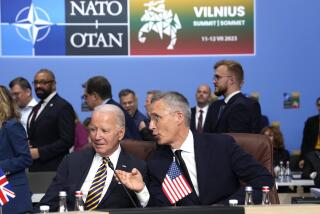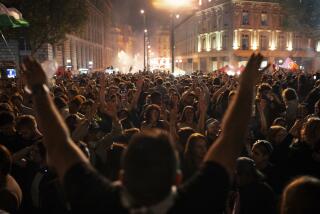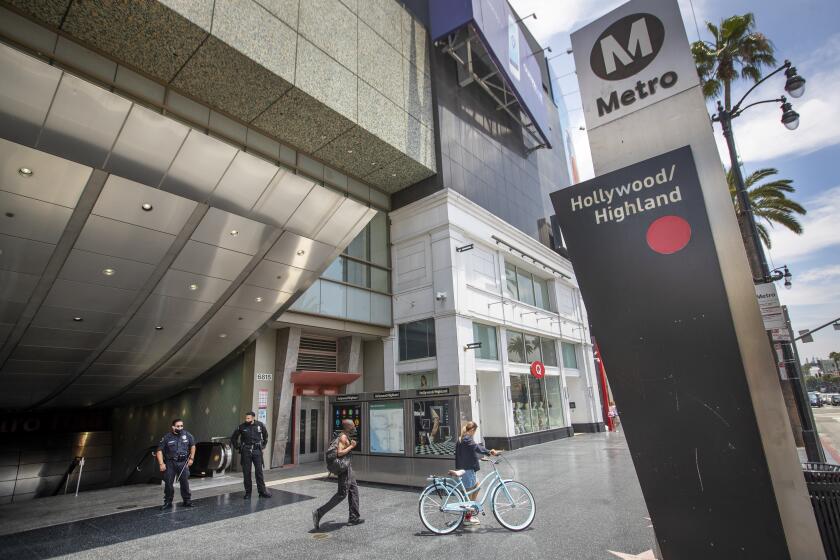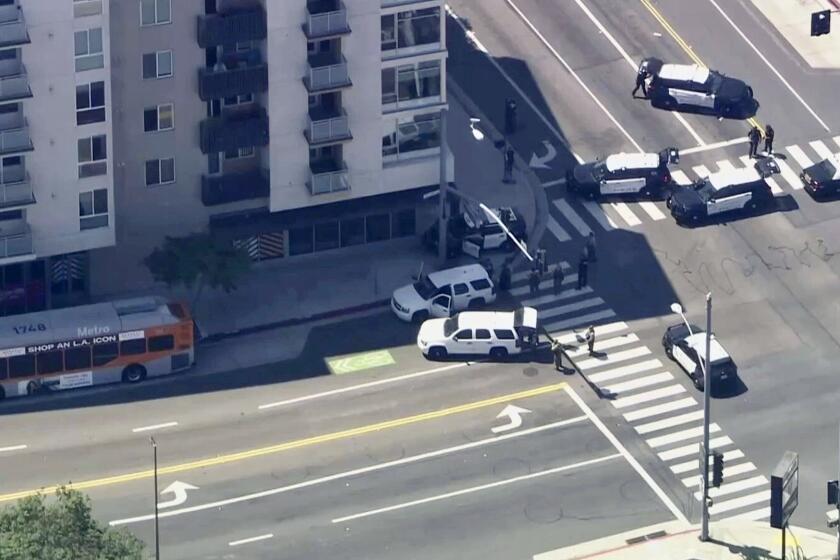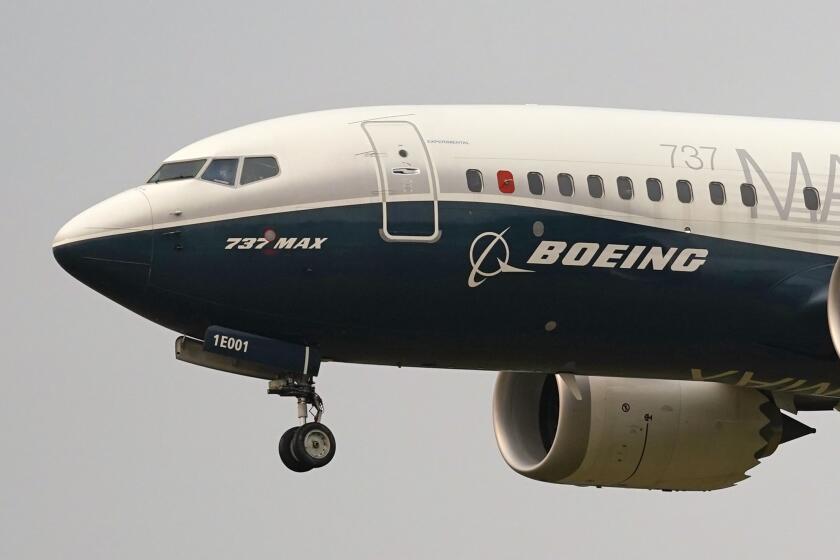Takeoff Delay May Have Been Vital for Flight 93
A flight delay in Newark might have helped save lives on the ground--and landmarks in the nation’s capital--during last week’s terrorist attacks.
One of four planes hijacked by knife-wielding men--the one that crashed in the Pennsylvania countryside--took off about 40 minutes late, airline officials and aviation sources confirm.
This delay is now believed to have helped passengers on United Airlines Flight 93 to San Francisco learn, via calls from cell and air phones, of the planes being crashed into the World Trade Center.
Passengers, according to relatives who talked to them by phone, then rose up to prevent their jet from being flown into a target in Washington, as the hijackers apparently had planned. Instead, the Boeing 757 went down in a desolate spot in western Pennsylvania. No one on the ground was killed, but all 44 aboard perished.
“The delay probably had a crucial effect on the outcome of that flight,” said Alice Hoglan, whose son, Mark Bingham, called her in Northern California from aboard the plane. Other family members have confirmed that passengers got word of the disaster at the World Trade Center.
Bingham, a rugby player, is believed to have been among the passengers who tried to take Flight 93 back from the hijackers. According to several accounts from family members, the passengers apparently rushed a hijacker who claimed to have a bomb.
According to the OAG Flight Guide, the scheduling bible for the industry, Flight 93 was supposed to leave at 8 a.m. from Newark for its six-hour, 14-minute flight to San Francisco. However, a chronology released by the Pentagon on Friday shows that it actually took off at 8:42 a.m.
“It probably made all the difference in the world to be able to have 42 [extra] minutes to get the news,” added Hoglan, who lives in Saratoga.
Joseph Tabacco, a San Francisco lawyer whose partner Alan Beaven was killed on the plane, agreed. But he said there was something else even more significant: The passengers aboard were daring enough to risk all by acting on the information received. “You had an unusual collection of passengers with leadership personalities on that plane,” he said.
Flight 93 was the last of the four hijacked planes to take flight.
Four minutes after United Flight 93 took off, American Airlines Flight 11 hit the World Trade Center. It’s not clear that the crash would have been visible from the United plane, since by then it would have been traveling west, away from Manhattan.
United spokesman Andy Plews confirmed that Flight 93 had been delayed but said he had no information on the reason. Newark, like other New York-area airports, is prone to delays, especially during the morning and evening hours preferred by business travelers.
“We haven’t looked into why it was delayed,” Plews said. “I’m not going to comment additionally on what significance [the delay] may have had.”
According to information released by Flight Explorer, a firm that supplies real-time radar-tracking data to the airline industry, Flight 93 might have been hijacked as late as 9:35 a.m., when it turned away from its westerly course in the vicinity of Cleveland.
By that time, both World Trade Center towers had been hit and air traffic controllers were desperately trying to land every airliner in flight over the United States. Soon, someone at the controls of Flight 93 filed a new flight plan, listing Reagan National Airport in Washington as the destination.
President Bush had authorized fighter jets to shoot down airliners threatening the capital, but Flight 93 never got close.
During the hijacking, air traffic controllers monitoring the flight in Cleveland heard someone in the cockpit say: “Hey, get out of here,” according to a source who was briefed on the sequence of events. This source said that a thick, accented voice then announced over the plane’s intercom: “This is your captain. There is a bomb on board. Please remain seated. We are returning to the airport.”
Another source, a former Defense Department official familiar with the route flown by Flight 93, said the passengers gained a crucial edge when they were able to comprehend the larger context in which the terrifying events aboard the plane were unfolding.
“It would have changed the events if the plane had taken off on time,” said the former military aviator. “The passengers wouldn’t have had the big picture. They would have been dealing only with the misinformation supplied by the hijackers.”
Estimates are that Flight 93 crashed about 10:10 a.m., some 90 minutes after it took off and at least 35 minutes after it was hijacked.
More to Read
Start your day right
Sign up for Essential California for news, features and recommendations from the L.A. Times and beyond in your inbox six days a week.
You may occasionally receive promotional content from the Los Angeles Times.
